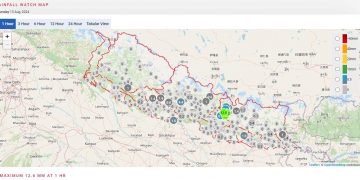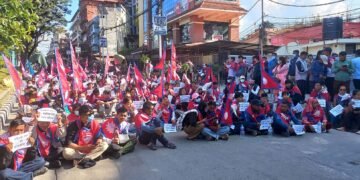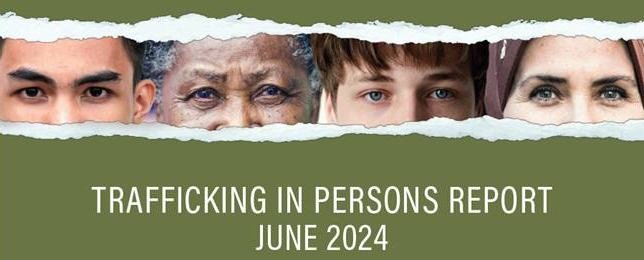Kathmandu, June 27: Despite significant efforts, Nepal has experienced a setback on human trafficking efforts, downgrading from Tier 2 to Tier 2 Watch List for failing to meet the international minimum standards for elimination of trafficking.
The significant efforts Nepal has achieved included slightly increasing convictions and increasing the number of potential trafficking victims who received services, and the formulation of a bill to provide citizenship for certain stateless persons in the country and a citizenship grant to thousands of people reportedly, reducing vulnerabilities to trafficking.
However, in some areas, the country has lagged behind. According to 2024 Trafficking in Persons Report released by the U.S. Department of State, for the ninth consecutive year, the government has yet to finalise draft amendments to criminalise all forms of labor trafficking and sex trafficking.
Similarly, it witnessed a little prosecution of traffickers, and concerns continued about official complicity in trafficking crimes while failing to finalise pending Standard Operating Procedures for victim identification and referral to services for the fifth consecutive year.
The report has also expressed concern about Nepal’s outdated laws relating to trafficking, insufficient investigations and prosecutions, a lack of victim identification and protection protocols, inadequate oversight of recruitment agencies and protection for migrant workers, inadequate efforts to prevent human trafficking, identify and protect trafficking victims, and decreased anti-trafficking law enforcement efforts.
There is a decrease in anti-trafficking law enforcement efforts. The Nepal Police and the Office of the Attorney General continued to lead anti-trafficking law enforcement efforts. During the fiscal year from July 16, 2022, to July 15, 2023, the police conducted 131 investigations involving 321 suspects, and continued investigating at least 209 sex trafficking cases involving 116 suspects compared to 145 investigations involving 291 suspects in the previous fiscal year. Police also registered 75 child trafficking cases.
The government initiated prosecution against 356 suspects in 175 cases, including 53 sex trafficking suspects in 24 cases and 303 suspects in 151 cases of unspecified forms of trafficking, and continued prosecuting 209 ongoing sex trafficking cases compared to initiating prosecution against 682 suspects in 386 cases in the previous reporting period.
Courts convicted 176 traffickers. However, the government did not report the sentences prescribed to convicted traffickers or provide disaggregated data on these convictions, which may have included non-trafficking offenses. This compared with district courts convicting 162 traffickers in 82 cases under the Human Trafficking and Transportation (Control) Act of Nepal, the high court upholding the convictions of traffickers in 49 cases, and the Nepali Supreme Court upholding the conviction of traffickers in 26 cases during the previous reporting period.
The government maintained inadequate efforts to identify and protect trafficking victims. The government reported identifying 766 potential trafficking victims. Unlike in prior years, the government did not disaggregate victim identification data by type of trafficking and did not provide the number of confirmed victims; given the government’s tendency to conflate trafficking with other crimes, this figure may have included victims of crimes not involving forced labor or sex trafficking.
This compared with 207 victims identified (120 for sex trafficking and 78 for labor trafficking) in the previous reporting period.
Recommendations included amendment of anti-trafficking laws to fully adhere to international standards, increase in investigation and prosecutions, setting up of local coordination committees on human trafficking and finalisation of victim identification, strengthening monitoring and enforcing regulations for recruitment agencies, enhancing protection services for victims, and providing training to prosecutors and judges on restitution in criminal cases and victim compensation.
Similarly, restrictions should be lifted on female migration to discourage irregular migration and engage destination countries to create rights-based, enforceable agreement, thus protecting Nepali workers from human trafficking while there should be increased monitoring of children’s homes and orphanages making them accountable. There should be efforts to provide national identity documents to Haruwa-Charuwa and stateless people, internationally recognised refugees, and asylum-seekers, and a comprehensive national action plan regarding the matter should be adopted and implemented.





















